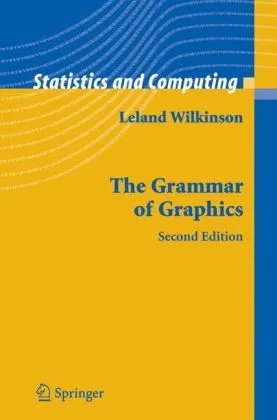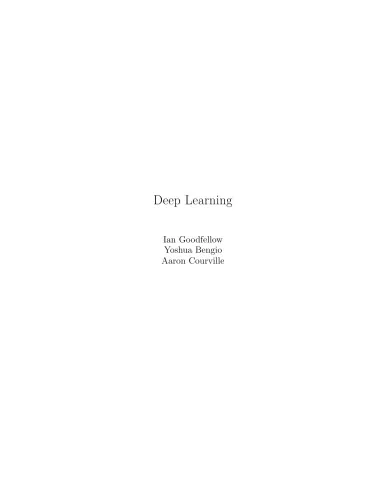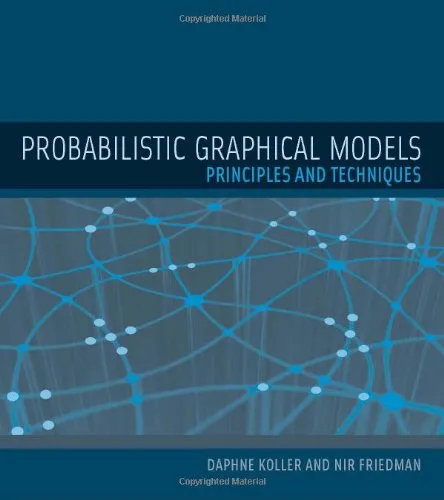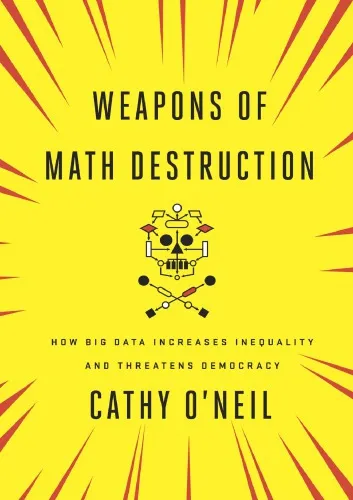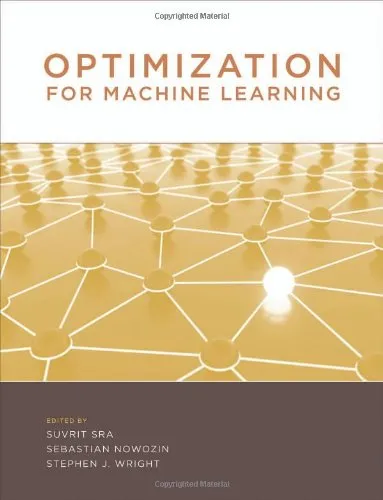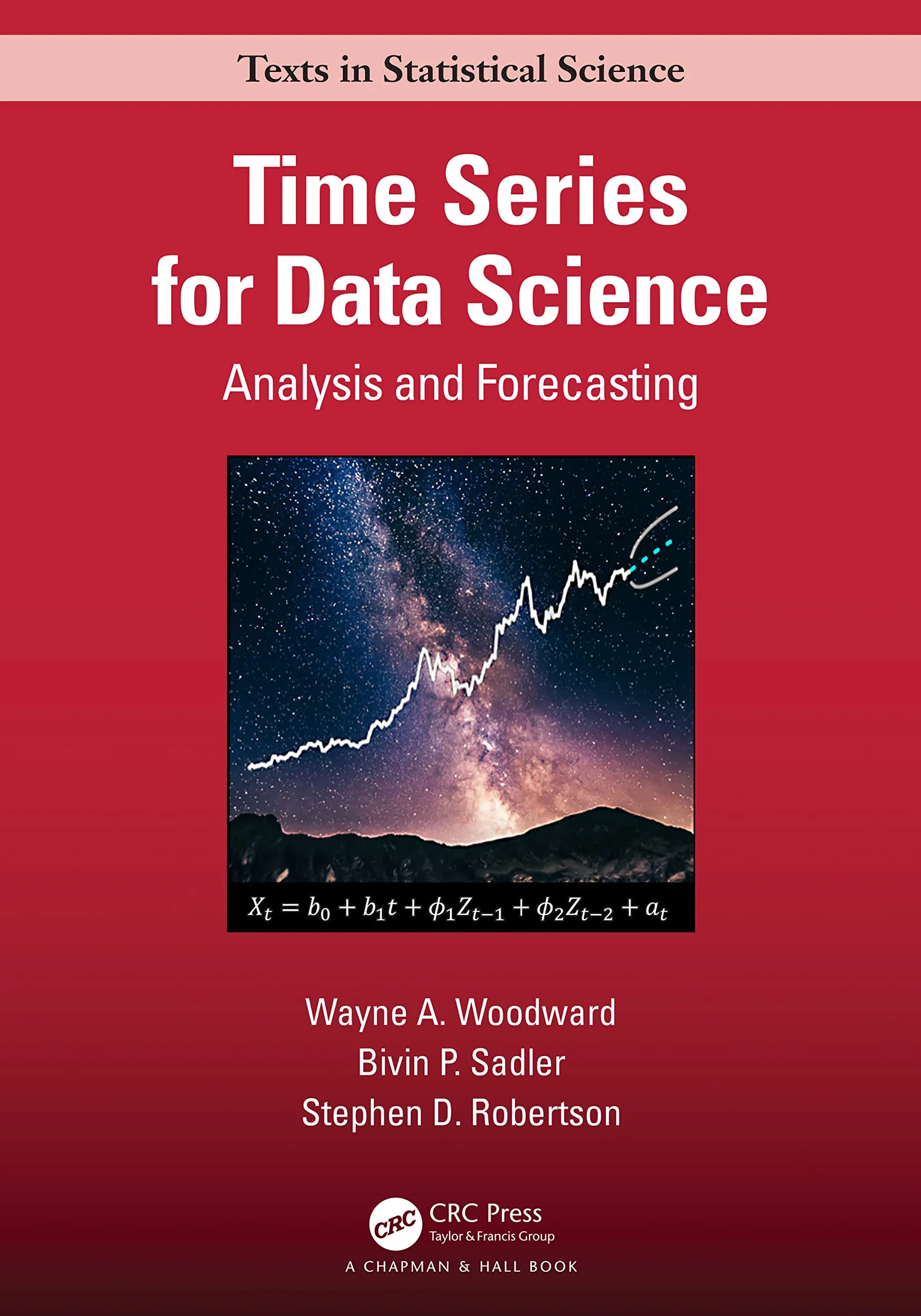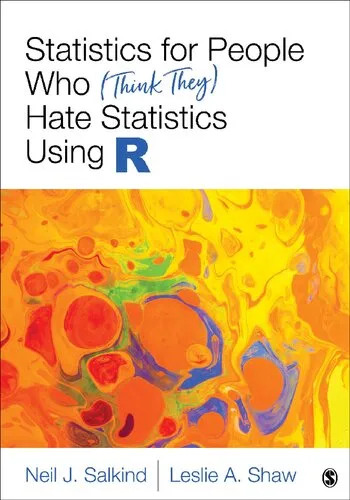The Grammar of Graphics
4.5
بر اساس نظر کاربران

شما میتونید سوالاتتون در باره کتاب رو از هوش مصنوعیش بعد از ورود بپرسید
هر دانلود یا پرسش از هوش مصنوعی 2 امتیاز لازم دارد، برای بدست آوردن امتیاز رایگان، به صفحه ی راهنمای امتیازات سر بزنید و یک سری کار ارزشمند انجام بدینکتاب های مرتبط:
معرفی کتاب The Grammar of Graphics
کتاب The Grammar of Graphics، اثری برجسته از لِلند ویلکینسون (Leland Wilkinson)، یکی از جامعترین منابع در زمینه اصول و مفاهیم تحلیل دادهها و بصریسازی آنها است. این کتاب، نه تنها اصول نظری مورد نیاز برای درک عمیقتر دیتا ویژوالیزیشن را پوشش میدهد، بلکه ساختارهای اساسی و منطقی که پشت طراحی گرافیکها قرار دارد را نیز توضیح میدهد. در ادامه، جزئیات بیشتری درباره این اثر مهم ارائه خواهد شد.
خلاصهای دقیق از کتاب
کتاب The Grammar of Graphics بر این مفهوم پایهریزی شده است که بصریسازی دادهها (Data Visualization) چیزی فراتر از طراحی گرافیکهای زیبا است. در واقع این کتاب یک زبان ساختاریافته برای تحلیل داده و طراحی نمودارها ارائه میدهد. نویسنده با تاکید بر گرامر زیربنایی که انواع بصریسازی داده را ممکن میسازد، چارچوبی را معرفی میکند که به صورت جهانی قابل استفاده است. در این چارچوب، عناصر گرافیکی نظیر نقاط (Points)، خطوط (Lines) و نقاط دادهای چندگانه، در کنار اجزای دیگر، با هم ادغام شده و داستانی را از دادهها روایت میکنند.
این کتاب بر سه مفهوم اصلی تاکید دارد: مفاهیم هندسی (Geometry)، آماری (Statistics) و ترکیب بصری (Aesthetics). همچنین به گونهای نوشته شده که هم برای محققان حرفهای و هم برای دانشجویانی که به تازگی وارد این حوزه شدهاند مفید باشد.
نکات کلیدی کتاب
- تعریف و کاربرد گرامر گرافیکی به عنوان یک زبان بصری برای تحلیل دادهها.
- شناخت روابط بنیادی بین دادهها، فضاهای هندسی، و روشهای آماری.
- یادگیری چگونگی استفاده از ابزارهای مختلف برای بیان داستانهایی که دادهها روایت میکنند.
- تسهیل طراحی نمودارهایی که از لحاظ بصری موثر و معنادار باشند.
جملات مشهور از کتاب
"Graphics are not just pictures; they are visual tools to explore data and reveal insights."
"Understanding the grammar behind charts enables analysts to create new, effective visualizations."
چرا این کتاب اهمیت دارد؟
در عصر دیجیتال، توانایی تحلیل و ارائه دادهها به روشی موثر یکی از مهارتهای کلیدی است. The Grammar of Graphics به خوانندگان این امکان را میدهد تا از اصول طراحی گرافیکی برای نمایش دادهها به بهترین نحو استفاده کنند. این کتاب نه تنها به معرفی مبانی تئوریک میپردازد، بلکه کاربردهای عملی آن را نیز آموزش میدهد، و همین امر آن را به یکی از منابع کلیدی در این زمینه تبدیل کرده است.
علاوه بر این، ایده گرامر گرافیکی الهامبخش بسیاری از ابزارهای مدرن بصریسازی دادهها نظیر ggplot2 در R شده است. خواندن این کتاب به افراد کمک میکند تا درک عمیقتری از زبان بصری دادهها پیدا کنند، که این موضوع برای هر کسی که قصد دارد در زمینههای تحلیل داده یا Data Science پیشرفت کند، ضروری است.
Introduction to "The Grammar of Graphics"
"The Grammar of Graphics," authored by Leland Wilkinson and a collaboration of experts including D. Wills, D. Rope, A. Norton, and R. Dubbs, is a foundational text that redefines how we think about data visualization. It provides a systematic approach to understanding, designing, and implementing graphics based on clear principles, making it an essential read for data scientists, statisticians, and anyone involved in visual storytelling through data.
The book offers a deep dive into the theoretical framework that underpins effective visualizations, transcending the limitations of specific tools or software. By focusing on the core components of what makes a graphic meaningful and precise, it empowers readers to think critically about their data representation choices, encouraging both creativity and rigor. From professionals looking to refine their visualization techniques to researchers exploring graphical theory, "The Grammar of Graphics" remains a timeless reference, bridging the gap between aesthetics and analytics.
Summary of the Book
At its core, "The Grammar of Graphics" introduces a universal grammar that underlies all successful data visualizations. Similar to how grammar structures language, the book posits that there are core components and rules that define clear, effective graphics. These components, meticulously outlined, include elements such as data, scales, coordinates, aesthetics, and layers.
The book delves into how data is transformed and represented visually, exploring concepts such as mappings, statistical transformations, and graphic primitives. Instead of focusing on any singular tool, it highlights a conceptual framework that can be applied widely across software platforms and visualization techniques. Readers will learn not just how to design charts and plots but why certain visualizations succeed or fail depending on the context and intended audience.
Additionally, "The Grammar of Graphics" challenges traditional notions of how visualizations are typically designed. It introduces innovative thinking by combining art, computer science, and statistical principles to produce a unified theory of graphics. Through this, it goes beyond conventional scatter plots, bar charts, and pie graphs, encouraging the reader to think differently about what is possible in data visualization.
Key Takeaways
- A universal framework for creating and analyzing visualizations, applicable across disciplines and tools.
- Emphasis on the importance of understanding data and context before focusing on aesthetics.
- Insights into fundamental components of graphics, such as data, scales, and layers, and how they interact.
- Encouragement to think critically and creatively about visualizing complex data.
- A blend of theory and practical applications, offering advanced concepts alongside accessible examples.
Famous Quotes from the Book
"A good graphic does not just lie in its aesthetics. Its value is determined by its content, its clarity, and how effectively it communicates to its audience."
"Graphics are maps of data. They encode values with visual properties, guiding the viewer toward insights that might elude raw numbers."
"The grammar of graphics is not about memorizing rules—it’s about understanding the principles behind visual communication."
Why This Book Matters
"The Grammar of Graphics" holds a unique place in the fields of data analysis and visualization because it combines theory with practical application in a way few books do. It matters because it equips readers with the ability to think beyond traditional visualizations, encouraging innovation and strategic thinking in how data is presented. The principles outlined in the book provide a solid foundation that can be applied universally, irrespective of technological advancements or specific software.
In an era where data plays a crucial role in decision-making, poorly constructed graphics can lead to misunderstandings, misinterpretations, or even biases. This book serves as a guide to not only prevent these issues but to transform graphics into powerful tools for communication, fostering better understanding and insight. It is both a call to action for professionals to adopt a systematic approach and a roadmap to mastering the art of visualization.
Whether you are a data visualization novice or an experienced professional, "The Grammar of Graphics" offers a timeless framework that encourages thoughtful design and clear communication. It remains a critical resource for elevating data visualization to an art form grounded in science.
دانلود رایگان مستقیم
شما میتونید سوالاتتون در باره کتاب رو از هوش مصنوعیش بعد از ورود بپرسید
دسترسی به کتابها از طریق پلتفرمهای قانونی و کتابخانههای عمومی نه تنها از حقوق نویسندگان و ناشران حمایت میکند، بلکه به پایداری فرهنگ کتابخوانی نیز کمک میرساند. پیش از دانلود، لحظهای به بررسی این گزینهها فکر کنید.
این کتاب رو در پلتفرم های دیگه ببینید
WorldCat به شما کمک میکنه تا کتاب ها رو در کتابخانه های سراسر دنیا پیدا کنید
امتیازها، نظرات تخصصی و صحبت ها درباره کتاب را در Goodreads ببینید
کتابهای کمیاب یا دست دوم را در AbeBooks پیدا کنید و بخرید
